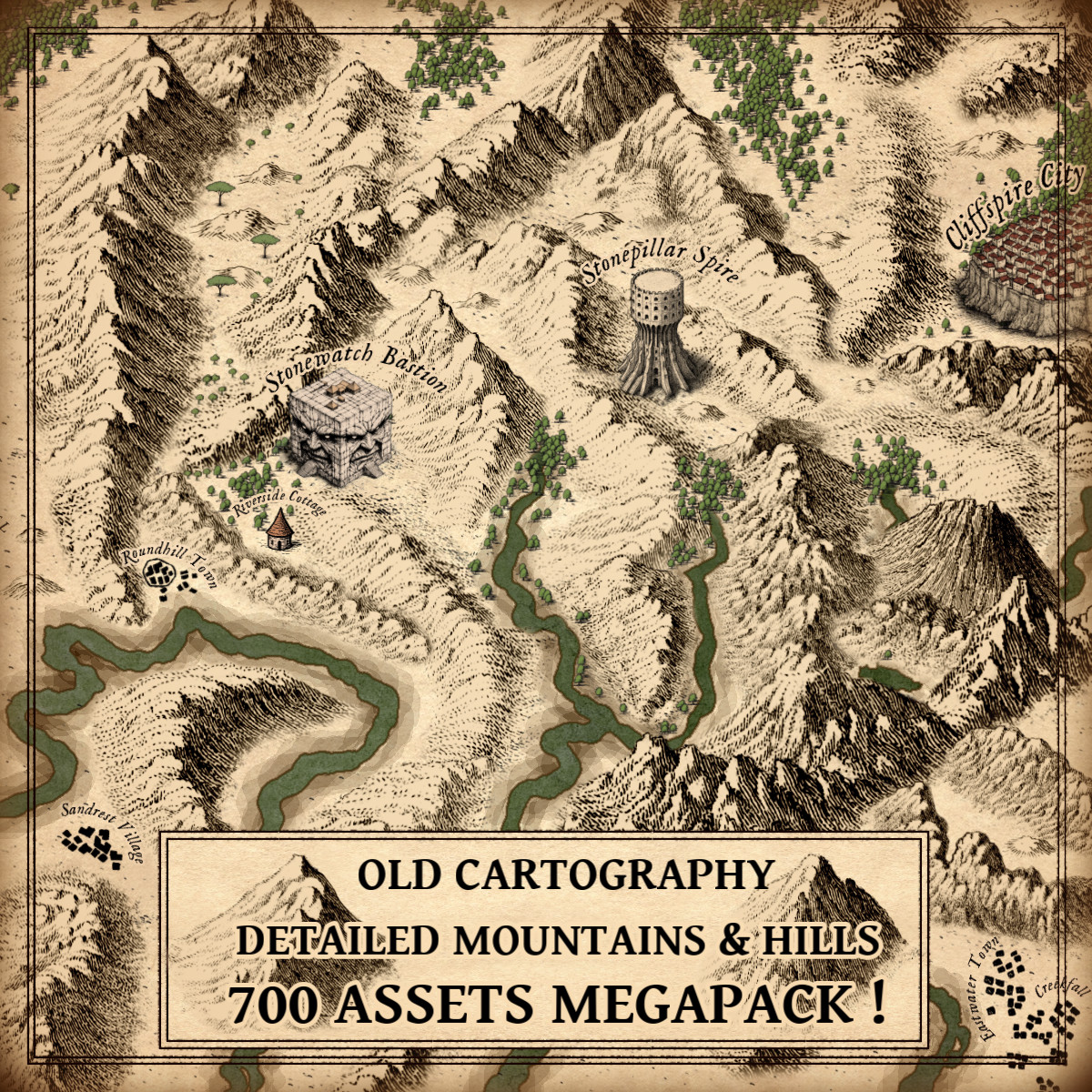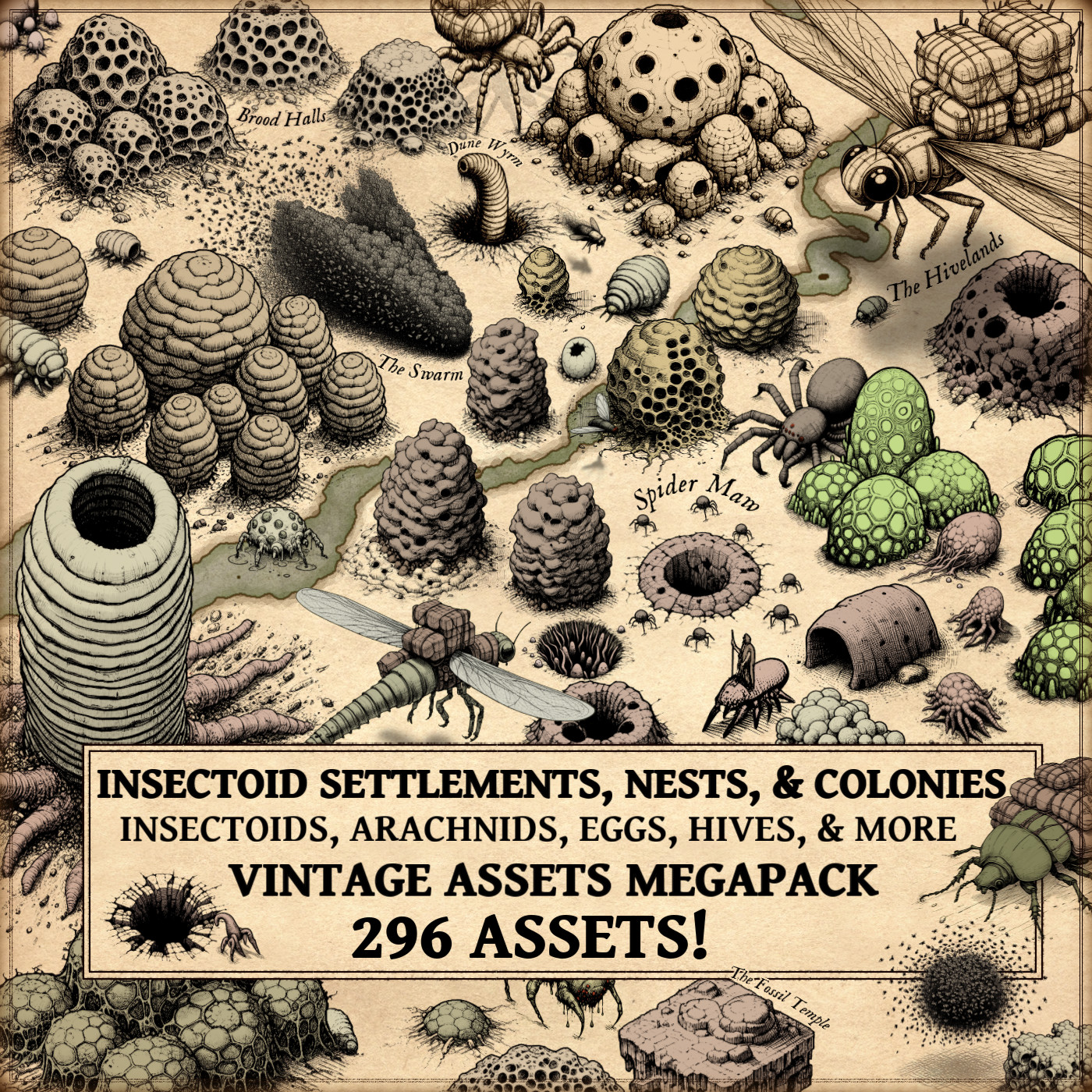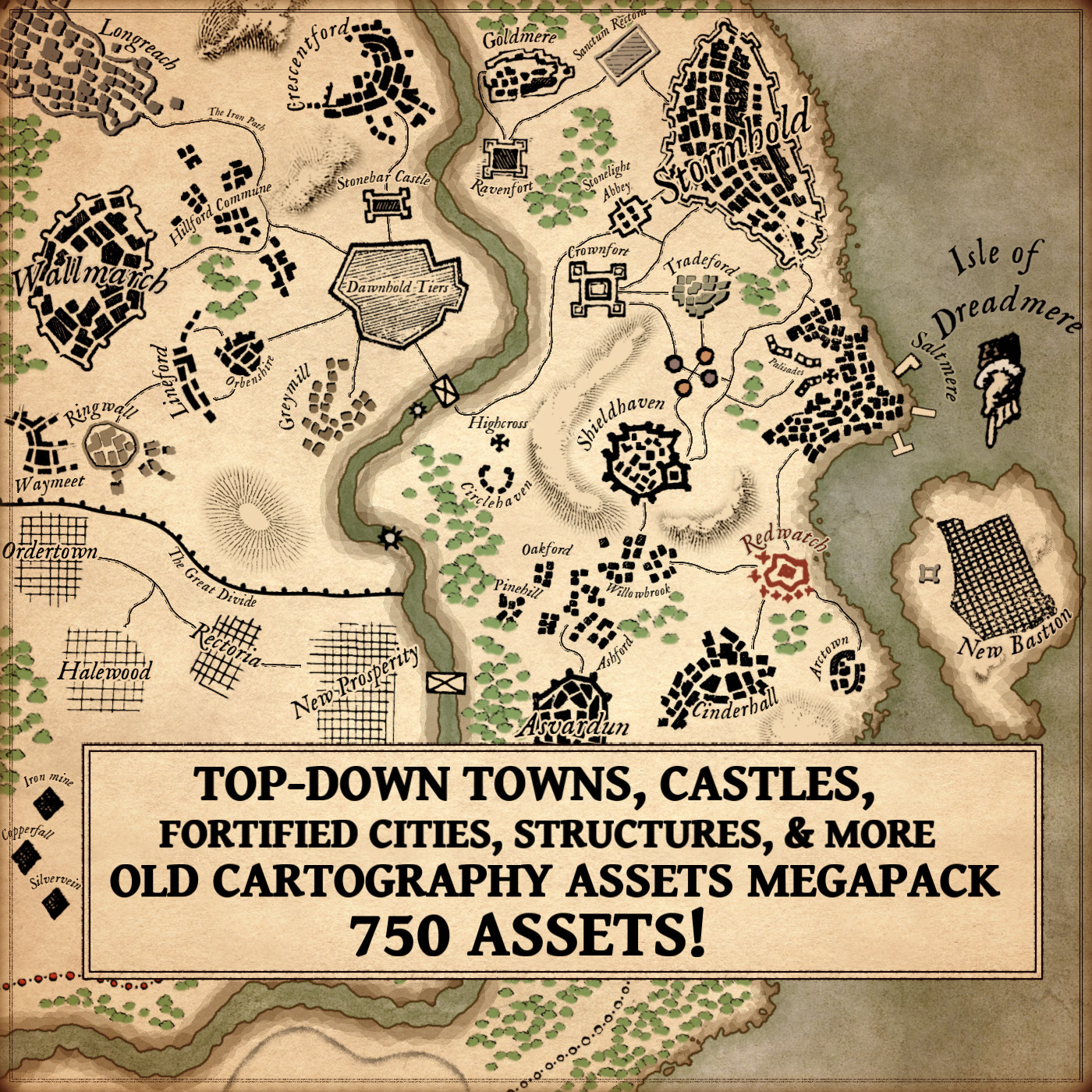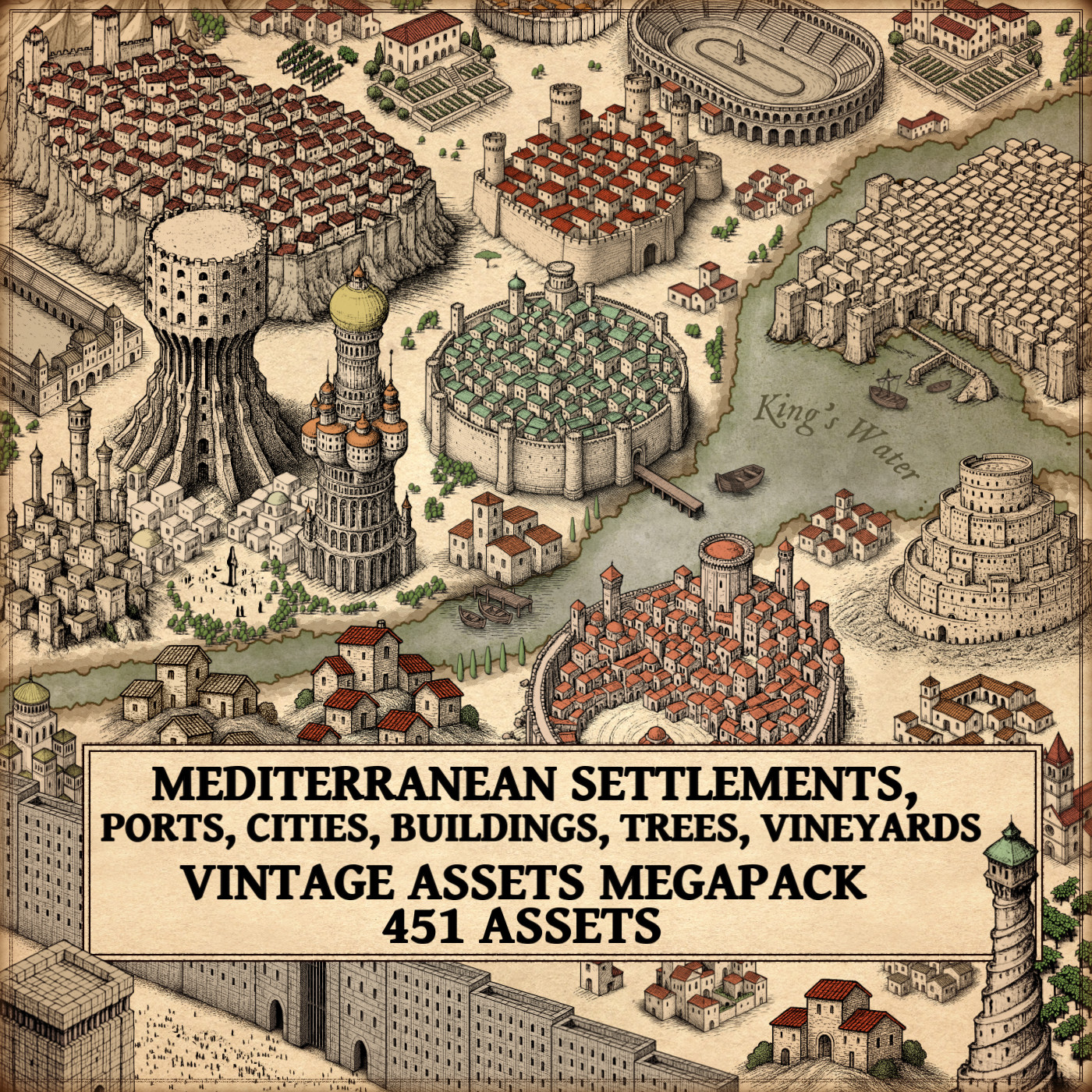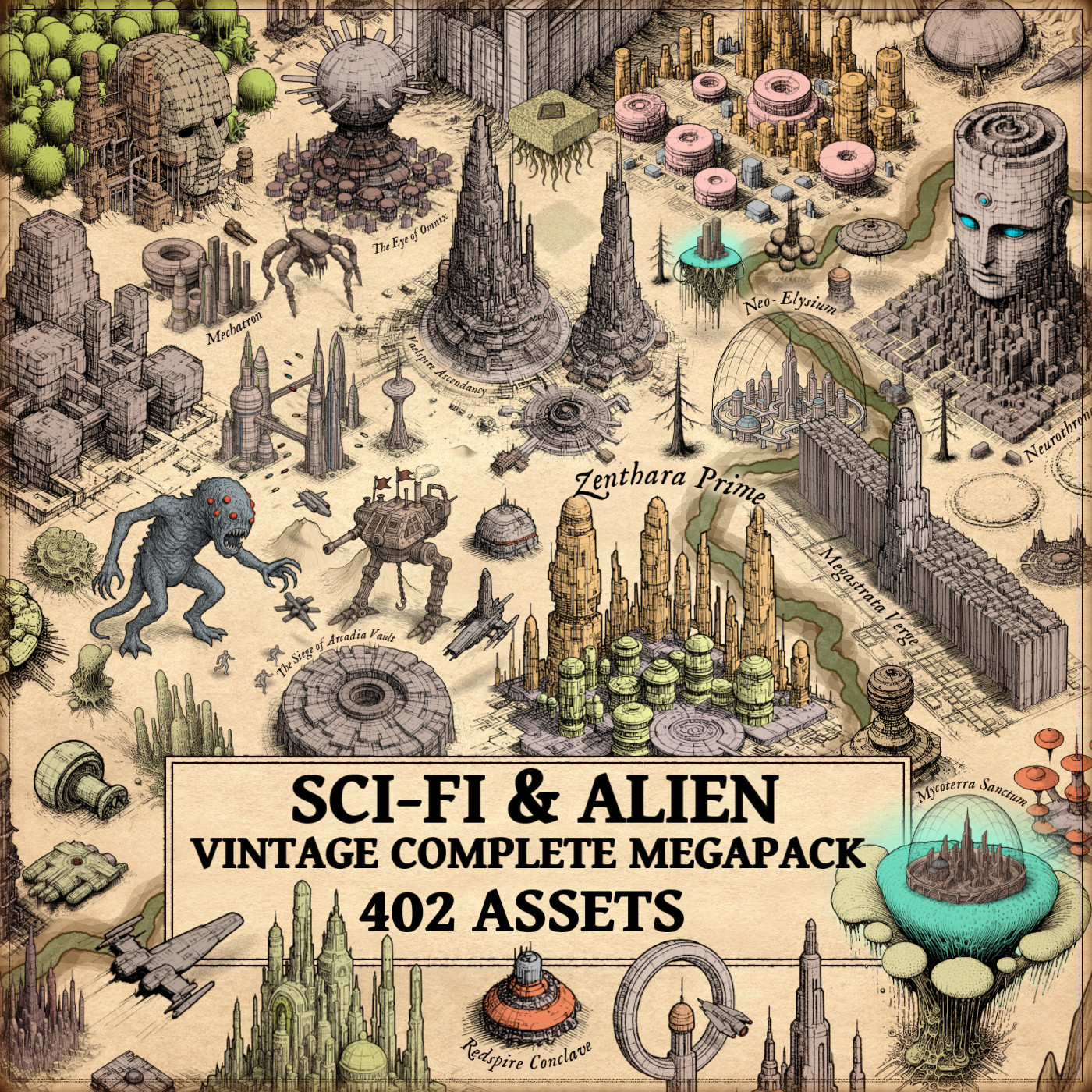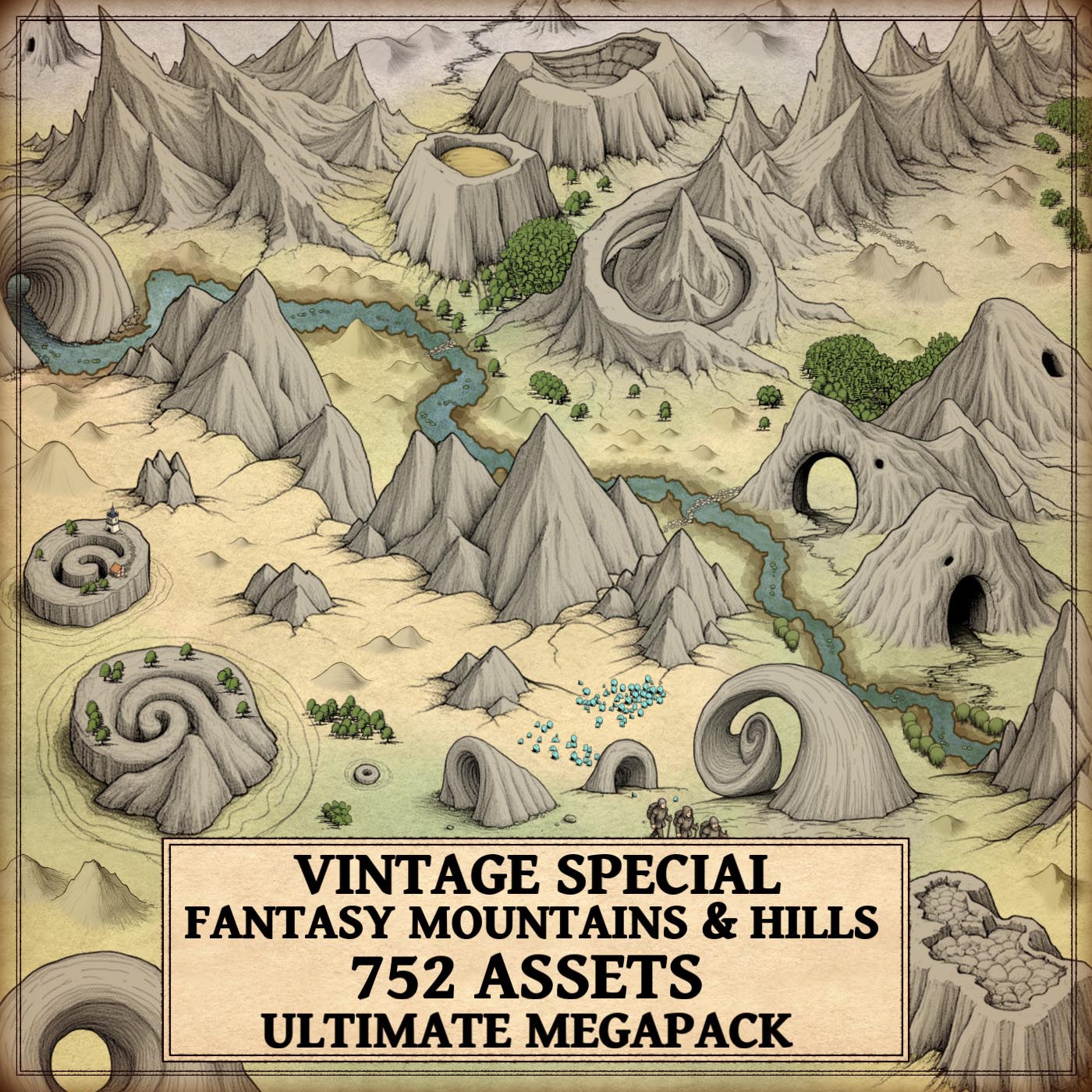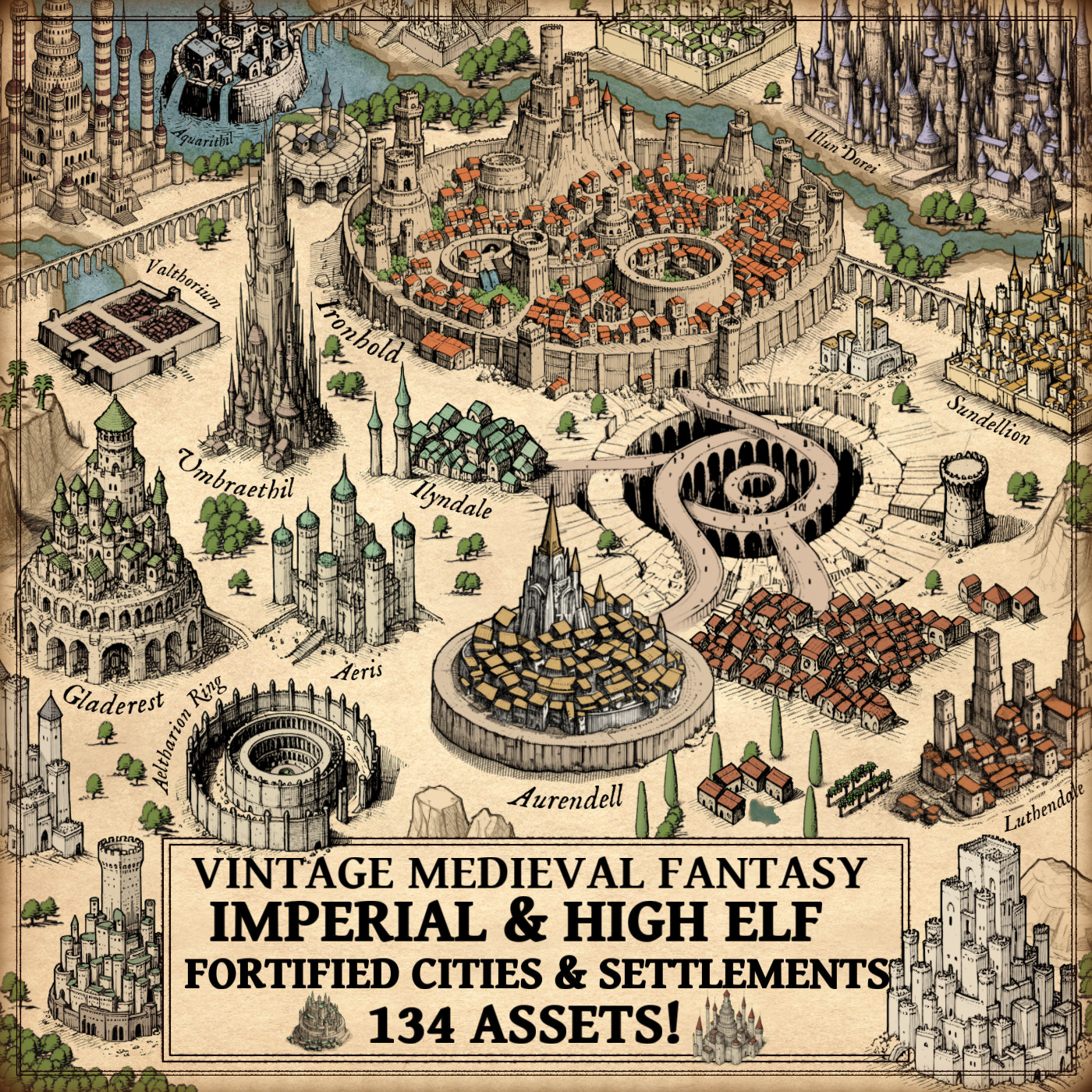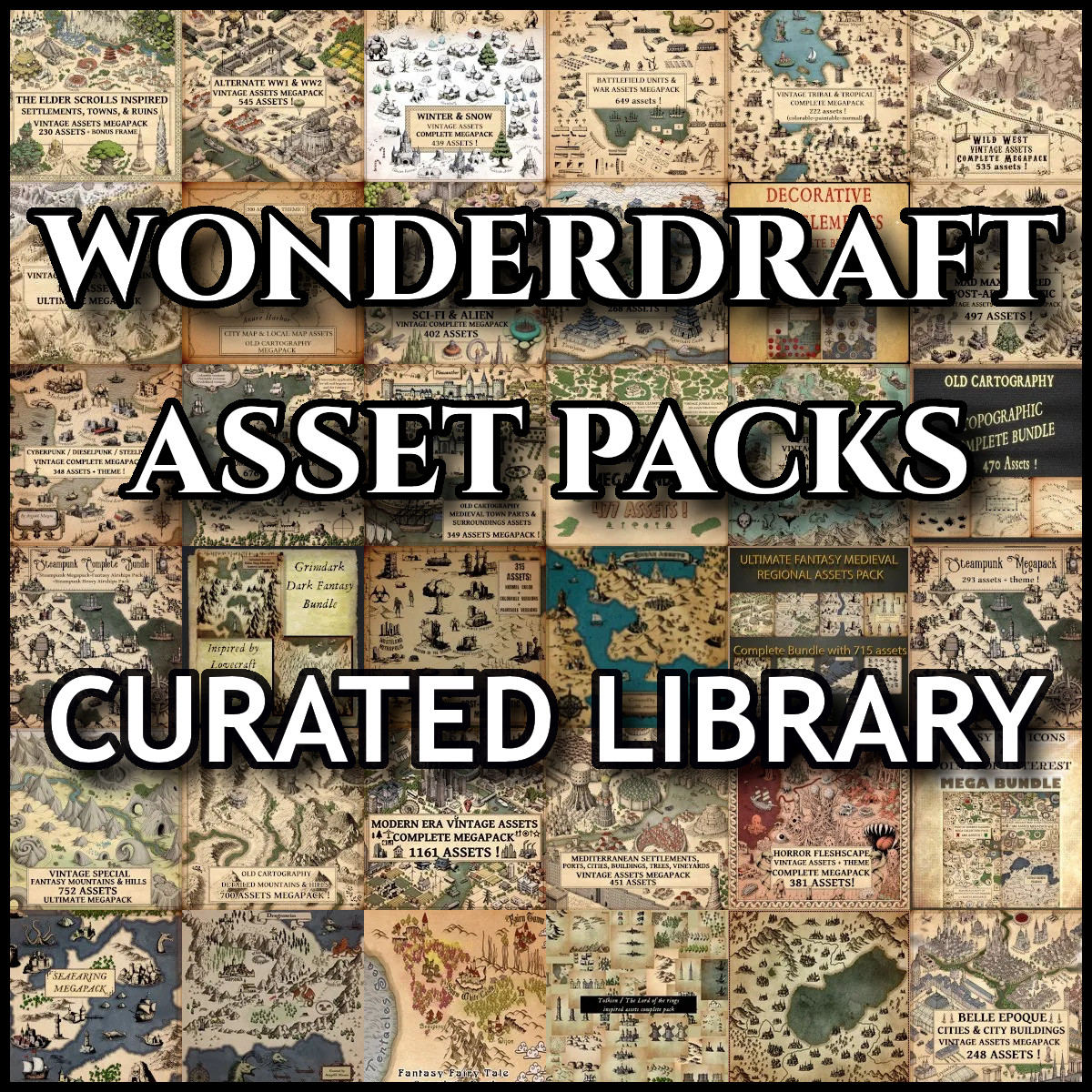
Wonderdraft assets are essential tools for creating detailed and immersive fantasy maps. They allow mapmakers to add mountains, cities, symbols, terrain features, and decorative elements directly inside Wonderdraft, transforming a simple map into a believable and readable world.
Whether you are a dungeon master preparing a campaign, a fantasy writer visualizing fictional regions, or a worldbuilder designing entire continents, high-quality Wonderdraft assets make a decisive difference in both clarity and atmosphere. Carefully curated Wonderdraft asset packs help creators work faster while maintaining a consistent visual identity across their maps.
This page serves as a reference hub for Wonderdraft assets, explaining how they are used in fantasy mapmaking and how to choose the right assets for professional-quality cartography.
Looking for Wonderdraft asset packs?
Browse the complete Wonderdraft asset library and packs
What Are Wonderdraft Assets in Fantasy Mapmaking?
Wonderdraft assets are graphic elements specifically designed to be imported and used within the Wonderdraft mapmaking software. They are usually provided as transparent PNG files and can be added as symbols or custom assets inside the editor.
These Wonderdraft map assets represent both natural and man-made elements: mountains, trees, cities, castles, roads, landmarks, and decorative cartography components. Well-crafted Wonderdraft assets follow consistent scale, perspective, and shading so that all elements blend naturally on the same map.
Rather than drawing every feature by hand, mapmakers rely on custom Wonderdraft assets to speed up their workflow while maintaining a coherent and polished visual style.
Why High-Quality Wonderdraft Assets Matter
Not all Wonderdraft assets produce the same results. Inconsistent or poorly designed assets can make a fantasy map feel cluttered, unreadable, or amateurish.
High-quality Wonderdraft assets offer several advantages:
- Clear readability at different zoom levels
- Consistent visual style across the entire map
- Faster map creation without sacrificing detail
- Professional results suitable for publication or sharing
For creators who care about immersion and presentation, using carefully designed Wonderdraft assets is essential.
Types of Wonderdraft Assets for Fantasy Maps
Wonderdraft supports a wide range of asset types, each serving a specific role in fantasy cartography. Together, these elements form complete fantasy map assets for Wonderdraft, suitable for both regional projects and large-scale world maps.
Mountains & Terrain Assets
Mountains, hills, ridges, volcanoes, trees, swamps, and deserts define the geography and mood of a fantasy world. Terrain assets establish scale, climate, and natural borders.
Cities, Settlements & Architecture
Cities, towns, villages, forts, castles, ruins, and harbors represent civilization, political power, and trade networks across the map.
Symbols & Map Icons
These Wonderdraft symbols highlight points of interest such as temples, towers, mines, ruins, battlefields, or magical locations. Map icons help guide the reader’s eye and support storytelling through visual cues.
Decorative Cartography Elements
Borders, frames, compass roses, banners, textures, and ornamental details add an old-world cartographic feel and elevate the visual presentation of a fantasy map.
Who Uses Wonderdraft Assets?
Wonderdraft assets are used by a wide range of creators working on different types of fantasy projects.
Dungeon Masters rely on them to build clear and immersive RPG campaign maps. Fantasy writers use Wonderdraft map assets to visualize fictional regions and maintain geographic consistency across their stories. Worldbuilders design continents, kingdoms, and trade routes, while game developers prototype fantasy settings during early production stages. Artists and cartographers also use Wonderdraft assets to explore historical and engraved map styles.
Across all these use cases, consistency and readability remain the key reasons for choosing high-quality Wonderdraft assets.
Vintage & Old Cartography Style Wonderdraft Assets
Many fantasy mapmakers prefer assets inspired by vintage and historical cartography. Engraved mountains, hand-drawn settlements, and antique symbols evoke the look of old atlases and medieval maps.
This old-world cartography style is especially effective for:
- Classic or low-magic fantasy settings
- Folklore-inspired regions
- Historical or pseudo-historical worlds
- Parchment and hand-drawn map aesthetics
Vintage Wonderdraft assets emphasize linework, texture, and shading rather than flat digital shapes, creating a timeless and immersive visual language.
How to Choose the Right Wonderdraft Assets
When selecting Wonderdraft assets, it is important to consider several factors:
- Compatibility with Wonderdraft (transparent PNG files, correct scale)
- Consistency in style across multiple Wonderdraft asset packs
- Readability on both regional and world-scale fantasy maps
- Licensing for personal and commercial projects
Using a curated collection of assets designed to work together usually produces better results than mixing unrelated styles.
Examples of Wonderdraft Asset Packs
The asset packs listed below are only a small selection from a much larger collection of Wonderdraft assets available on this site. They are presented as examples to illustrate the variety of styles, themes, and cartographic elements that can be combined to build cohesive fantasy maps.
The full library includes many more Wonderdraft asset packs covering terrain, settlements, symbols, and decorative cartography elements, all designed to work seamlessly with Wonderdraft.
Mountains, Trees, & Terrain Assets
Engraved-style mountains, hills, ridges, volcanoes, and natural terrain symbols inspired by vintage and hand-drawn cartography.
Explore Mountain & Terrain Assets for Wonderdraft
Cities, Settlements & Architecture
Towns, villages, fortified cities, castles, and architectural symbols suitable for regional and world-scale fantasy maps.
Browse Settlement & Town Assets
Symbols & Map Icons
Landmarks, temples, ruins, towers, magical locations, and point-of-interest icons for storytelling and worldbuilding.
Discover Fantasy Map Icons & Symbols
Vintage & Old Cartography Elements
Decorative borders, compass roses, ornaments, frames, and engraved-style elements inspired by historical atlases.
View Vintage Cartography Assets
Created by a Dedicated Fantasy Cartographer
All Wonderdraft assets available on this site are created by an independent fantasy cartographer and digital artist specialized in vintage and engraved-style map design.
These assets have been used by thousands of mapmakers worldwide for tabletop RPGs, fantasy novels, worldbuilding projects, and commercial publications.
Each Wonderdraft asset pack is developed with a strong focus on historical cartography references, visual consistency, and long-term usability within Wonderdraft.
Explore the Full Wonderdraft Asset Library
This site hosts a growing library of premium Wonderdraft assets created for fantasy mapmakers who value authenticity, consistency, and old-world cartography aesthetics.
All assets are designed to work together, allowing creators to combine different Wonderdraft asset packs into cohesive maps without visual clashes or stylistic breaks.

